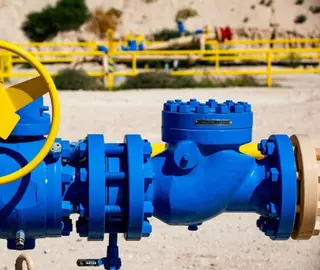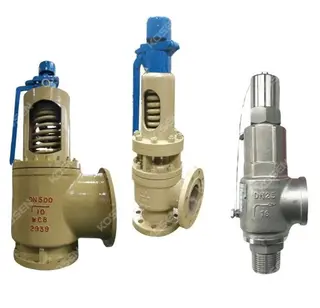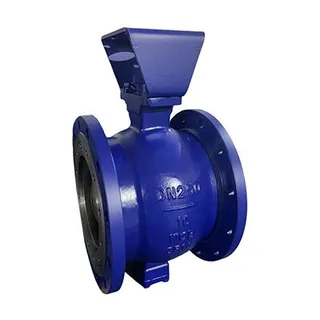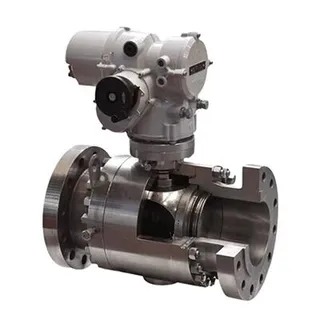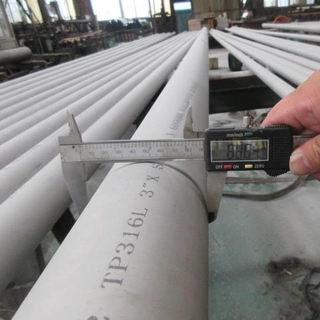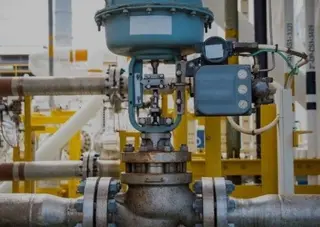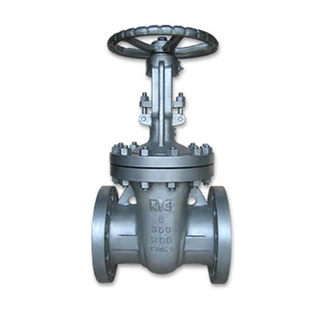Valve Packing Installation: Key Steps and Considerations
In numerous industrial application scenarios, the sealing performance of valves is one of the key factors to ensure smooth, safe, and efficient production processes. Gland packing, as the core component for achieving valve sealing, has its installation precision directly determining the quality of the sealing effect. A correctly installed packing system not only effectively prevents medium leakage, ensures the safety and stability of the production environment, but also significantly extends the service life of the packing itself, reducing equipment maintenance costs and downtime. Therefore, deeply understanding and mastering the correct methods for gland packing installation is a crucial skill for every person engaged in industrial equipment maintenance and operation.
Basic Structure and Function of Gland Packing
Gland packing is usually installed in the valve stuffing box, used to seal the gap between the valve stem and the stuffing box, preventing medium leakage. The stuffing box can generally accommodate four to six packing rings, while the number of sealing elements on the valve stem depends on the specific structure, ranging from one or two to as many as seven packing rings, as in rising-stem structures. Packing rings can be manufactured by either braided rope methods or molding methods. Packing materials made by braided rope methods can be cut into sections according to the circumference of the mandrel/valve stem, with the cut typically at 45° (mitered) or 90° (butt). The mitered method can achieve better end-face contact under axial load.
Selection and Properties of Packing Materials
The material of the packing significantly affects its performance. Different materials are suitable for different working environments and media. The following are the characteristics and applicable ranges of several common packing materials:
1. Polytetrafluoroethylene (PTFE)
PTFE is a widely used packing material with excellent chemical corrosion resistance and a relatively low friction coefficient. Its temperature range is approximately from −101°C to 232°C. If applied in higher temperature environments, its molecular structure may change, leading to the leakage of harmful gases, causing corrosion of the valve stem, and potentially releasing toxic PTFE fumes. These fumes may be carcinogenic. In addition, as fumes are released, the packing material softens, loses weight, and may cause leakage of harmful process media or products.
2. Flexible Graphite
Flexible graphite is a high-performance packing material suitable for a broader temperature range. In oxidizing atmospheres, its applicable temperature range is generally from −196°C to 450°C. By comprehensively considering material characteristics such as ash content, chlorides, sulfur, fluorides, and other halogen compounds, as well as manufacturer-provided oxidation mass loss data, graphite packing can reliably prevent leakage up to 450°C. In non-oxidizing steam conditions, it can withstand up to 650°C. Both flexible graphite and PTFE are widely suitable for media with pH 0–14; graphite material may also be applicable for fireproof sealing in certain situations.
Correct Methods for Gland Packing Installation
In industrial equipment operation, the sealing performance of valves directly affects production safety, efficiency, and environmental protection. As the key element of valve sealing, the correctness of packing installation decisively influences the sealing effect. Correct installation not only ensures the sealing performance of the valve but also extends the packing's service life and reduces maintenance costs. Therefore, mastering the correct installation methods for gland packing is crucial.
1. Preparation Work
Before installing packing, a hazard and risk assessment must be conducted to ensure construction safety. First, the valve must be properly isolated to prevent accidental leakage. Workers should wear protective clothing and goggles as required to ensure personal safety. Use packing cleaning tools to thoroughly remove old packing from the stuffing box, carefully inspect the valve stem with a maintenance mirror for pitting and scratches, and ensure that all old packing has been completely cleared. If the valve stem is damaged, refurbishment may be necessary.
Next, measure the valve stem outer diameter (OD), stuffing box inner diameter (ID), and stuffing box cavity depth to accurately calculate the packing dimensions. The radius of the packing ring can be calculated as: Ring thickness = (OD - ID) / 2. Based on the stuffing box cavity depth, calculate how many layers of packing rings are needed to match. The packing material can be wrapped around a mandrel of the same diameter as the valve stem and cut vertically (radially), or cut mitered using specialized packing cutting tools. During cutting, avoid stretching the packing material along its length to prevent cross-sectional deformation from compression. The cut surface must be neat, free of impurities or debris.
2. Installation of Packing Rings
Packing rings must be independent and should not fill the stuffing box by winding the packing material in a coil. Use specialized cutting tools to cut the braided packing material into independent rings, with 45° mitered joints to utilize axial load for better end-face contact. Check that each ring matches the stuffing box exactly, ensuring each joint aligns properly and maximizes contact with the inner wall; do not stretch the braided material to fit the inner diameter. All subsequently installed rings must have the same dimensions and cut method as the first.
Pre-formed molded packing rings are relatively common and do not require on-site cutting, making installation easier. Before installation, check the valve gland bolts, nuts, and gaskets, replacing any damaged parts. Bolts and nuts should be greased. To effectively control fugitive leakage, a torque wrench must be used, following the procedures provided by the packing supplier. The stuffing box must also be clean and free of impurities and oil.
Insert the first packing ring into the stuffing box, paying attention to the joint's position. First, insert the joint portion, then the rest of the ring. For flexible graphite molded rings, each ring should be stretched into a spiral shape before installation to avoid damage. Install each ring individually, ensuring it is seated firmly before installing the next. If the gland follower is not long enough to reach the bottom of the stuffing box, temporary tools or extensions may be needed. Unless explicitly specified, sealing elements must not be lubricated. Apply load to each installed ring according to manufacturer specifications. Repeat the same steps for subsequent rings, installing one at a time. Adjacent ring joints must be positioned at 90° and 180°.
3. Post-Installation Check and Adjustment
After installation, the valve stem must be operated through thirty open-close cycles to ensure the packing set is properly seated. During this process, the packing may experience some relaxation; after cycling, the packing should be re-tightened according to manufacturer parameters to allow sufficient margin for future relaxation. Similarly, after the valve enters normal operation, perform a final tightening of the packing to reserve enough margin for stress relaxation in the future.
Consequences of Improper Installation
Improper packing installation may lead to a series of problems. For example, when installing a set of five packing rings at once, the top ring near the gland follower bears a higher load, while the bottom ring near the process medium bears very little load, even negligible. This occurs because the packing ring bears axial load, reducing the bottom ring's ability to prevent medium leakage, whether cut braided or molded. Another situation is applying excessive load on the top ring, increasing friction when rotating the valve stem, damaging the packing set. Data shows that if the installation is correct and standard, the packing set experiences no more than 20% stress relaxation after 100 mechanical cycles. Improper installation can reduce stress by approximately 60%, making the sealing performance unreliable.
Benefits of Correct Packing Installation
When packing is correctly installed, the decay from axial stress to radial stress is reduced. This helps the packing maintain reliable sealing performance and reasonable friction load distribution over a longer period. Consequently, the valve's fugitive emission sealing and production efficiency improve significantly. Correct packing installation avoids frequent replacement or re-tightening of the gland, extending packing set life and reducing maintenance costs.
Conclusion
Packing selection and installation are key steps to ensure valve sealing performance. By using correct installation methods and suitable materials, valve sealing performance and service life can be significantly improved. During installation, every step must be strictly performed according to specifications to ensure accuracy. At the same time, packing material should be selected based on specific working conditions and medium characteristics to achieve the best sealing effect. This article aims to help you better understand and master gland packing sealing technology, contributing to safe, efficient, and environmentally friendly industrial production.
Send your message to this supplier
Related Articles from the Supplier
Installation Considerations for Safety Valves
- Feb 08, 2025
Key Steps for Safety Valve Adjustment
- Sep 13, 2025
Guide to Key Steps of Safety Valve Adjustment
- Oct 09, 2025
Features and Installation of V-type ball valve
- Dec 14, 2024
Related Articles from China Manufacturers
Related Products Mentioned in the Article
Zhejiang Kosen Valve Co., Ltd.
- https://www.kosenvalve.com/
- Address: Dongou Industrial Zone, Oubei, Wenzhou, Zhejiang, China
- Phone: 86 577 5798 7171
- Business Type: Industry & Trading, Manufacturer,
Supplier Website
Source: https://www.kosenvalve.com/media-hub/valve-packing-installation-key-steps-and-considerations.html


